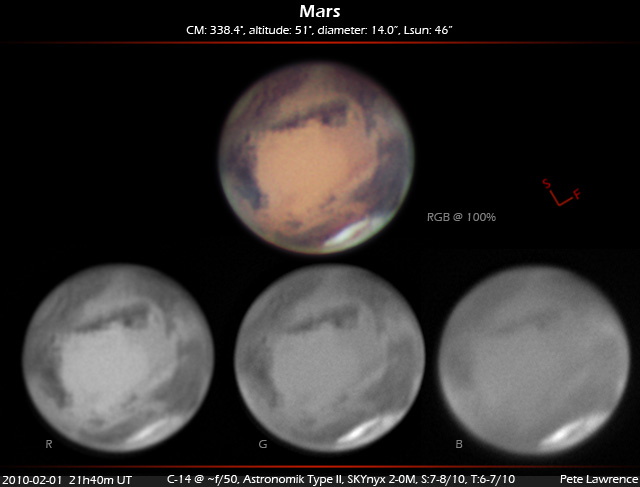The highlight this month is the planet Mars. Easy to spot as a bright red object in the night sky, visible in the east at sunset, moving to the south at midnight, and heading further west in the morning hours. And, because both the Earth and Mars are on the same side of the solar system at the moment we are quite close to Mars, making Mars look brighter in the evening sky, and big when you look through a telescope.
This why there are some fantastic images of Mars being taken recently, including this one from local astro-photographer Pete Lawrence, showing a dust devil that has pasted across the martian south pole (more details at SpaceWeather.com).
By 10pm, the planet Saturn is also rising in the east. The rings of debris that surround this planet are visible through binoculars if you have good eyesight, or easily through a small telescope to the rest of us.
Orion (the hunter), Taurus (the bull) and Canis Major (the great dog) are the dominating constellations this month, with the bright star Sirius forming the nose (or sometimes the collar) of the dog. You should not miss out on looking at the Pleiades or the Orion Nebula through binoculars, and notice how Sirius twinkles due to our turbulent atmosphere.
To find these objects, I recommend that you use either Stellarium or SkyMaps.com.

No comments:
Post a Comment